Aperture's Blog, page 51
September 7, 2021
The New Era of South Asian Photography Festivals
On February 12, 2021, Chobi Mela, a biennial photography festival in Dhaka, Bangladesh, launched its Shunno or Zero edition. The statement accompanying the title read that it “raises essential questions about its own purpose.” Mounted amid a global pandemic, via this “self-reflective edition,” the festival asked a pertinent question: “Is art in any way relevant any more to a time of endless loss of life and livelihood?”
Since last year, an invisible force—one that has raged and ravaged through lives and communities—connected individuals across the world. While the manner in which we have been impacted and the protections that we have been afforded have been a reflection, to an extent, of our independent privileges, the virus, at different times, has managed to bring the entire world to a standstill. As I spoke with the founders and directors of three photography festivals in South Asia, a sentiment that emerged was the need to slow down and reflect. In this time of overwhelming personal as well as collective grief, the forced pause on our trajectories has sprouted reckonings—some that had been in a slow churn before and others that responded intuitively to this moment.
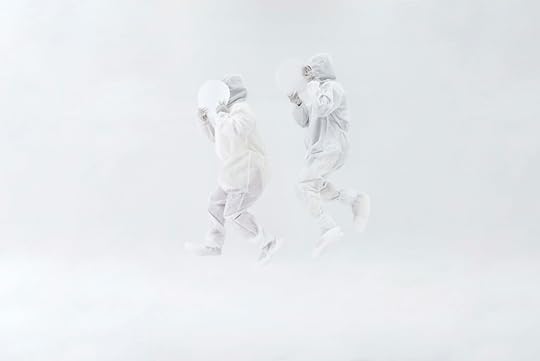 Salma Abedin Prithi, Untitled, from the series Torn, Dhaka, Bangladesh, 2020. The artist’s work was featured in Chobi Mela, 2021
Salma Abedin Prithi, Untitled, from the series Torn, Dhaka, Bangladesh, 2020. The artist’s work was featured in Chobi Mela, 2021Courtesy the artist
Tanzim Wahab of the Bengal Foundation, who took over as Chobi Mela’s festival director from photographer-activist Shahidul Alam in February 2019, spoke to me about this pause, while elaborating on the title for their latest edition. He sees Shunno as a vacuum that is both “philosophical and spiritual,” essential to “restarting from ground zero,” allowing a space to rethink, unlearn, and recalibrate. For the longest-running major photography festival in South Asia, founded in 2000, this would have been its eleventh edition. However, the festival team decided to position it as a bonus edition, one which was “baggage-free” from the expectations that a legacy of two decades may impose on it in a pandemic year. “We just wanted down-to-earth engagement of people, where people can freely experiment with the form, with the medium, and also with their content. Where they can strategize. They can also make some mistakes,” Wahab said, terming this edition “a star in the sky,” one that would “contextualize time” but will not be counted as the eleventh iteration.
This reconfigured thinking about the form of a festival resonated with others in the region. NayanTara Gurung Kakshapati, festival director of the biennial Photo Kathmandu, Nepal’s first and only international photography festival, has been thinking through the relevance of a festival format since its inception. Photo Kathmandu launched in 2015, the year Nepal was struck by a devastating earthquake, and Kakshapati was conscious of the timing of the festival in that critical year, and of the dilemma of spending resources on an arts-based event when over nine thousand Nepalis had lost their lives and thousands of others had their homes destroyed. Kakshapati, along with members of photo.circle, a self-described “platform for photography” based in Kathmandu that she cofounded, were themselves involved in relief efforts in the aftermath of the earthquake. “That year we were also responding to a very specific set of needs,” she told me. At a time when the economy of the country was significantly impacted, especially the tourism sector that sustained many livelihoods, Kakshapati saw the festival as a way to contribute to its rebuilding by attracting visitors and boosting tourism. Five years on, she was once again attuned to the need of the festival to evolve with changing circumstances and realities.
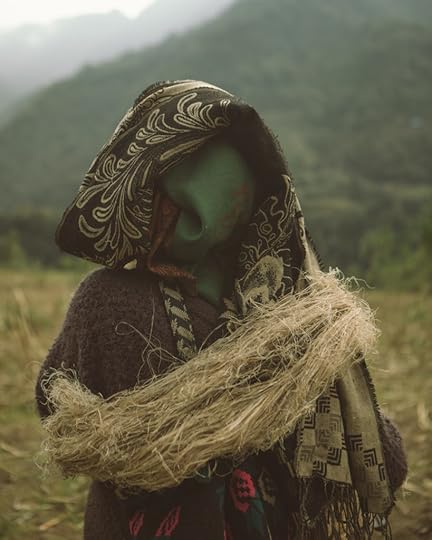 Prasiit Sthapiit, Hemp weaving, Rachibang, Rolpa, 2019. The artist’s work was featured in Photo Kathmandu, 2020
Prasiit Sthapiit, Hemp weaving, Rachibang, Rolpa, 2019. The artist’s work was featured in Photo Kathmandu, 2020Courtesy the artist
On December 3, 2020, Photo Kathmandu launched its fourth edition, with a week’s lineup of online artist talks and panel discussions, and an informal virtual “mixer”—an online version of Photo Kathmandu’s infamous “speed dating,” in which attendees networked and introduced themselves to others in rapid succession. In the introductory note, Kakshapati, on behalf of the festival team, proposed to shift from the five-week-long festival schedule to a yearlong form. “The festival is part of a larger continuum of image-making, research and civic engagements for us,” Kakshapati wrote, referencing the non-public facing work that photo.circle and Nepal Picture Library (a digital photo archive run by photo.circle) do throughout the year. Reflecting further on this continuum, she posited, “What might be possible if we were to take the resources and energy we commit to a 5-week festival, and stretch it out over a longer period? Would we be able to foster deeper, less frenzied connections and dialogue? This feels like a good time to shift gears and find out.”
This need for deeper engagement is a sentiment that reverberates across festivals, including Chennai Photo Biennale (CPB), a public arts initiative based in Chennai, India. Founded in 2016, CPB was meant to have its third edition in December 2020. Imagined as a “city’s biennale,” CPB intended to follow the lead of its counterparts in Dhaka and Kathmandu in extending beyond traditional exhibition spaces to include, as noted in their mission statement, “public spaces and those parts of Chennai that have remained outside the realm and remit of contemporary cultural activities.” With their heavy focus on engaging the city’s public, and the restrictions the pandemic posed to this endeavor, cofounders Varun Gupta and Shuchi Kapoor spoke about shifting the festival to a later date. With the change in timeline, amid an ongoing pandemic, came a shift in the festival’s imagined shape. “If we’re unable to bring people to the biennale,” Kapoor reflected, “aren’t there ways that the biennale can go to them?” Gupta returned to the emphasis on public spaces, calling it a “biennale without walls,” and referred to some of the sites that have been used for exhibitions in prior editions: “the train station, the park, the beach—these are the places we love to work in. So how do we not lose that?”
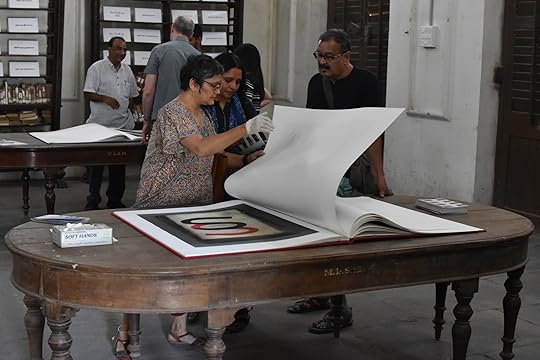
Angela Grauherholz, Privation, installation view at the Madras Literary Society, Chennai Photo Biennale, 2019. Photograph by Charles & Dhina
Courtesy the artists
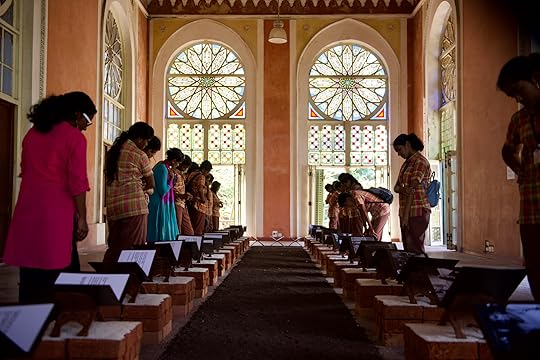
Sheba Chhachhi and Sonia Jabba, When the gun is raised, the dialogue stops, installation view at the Senate House, Chennai Photo Biennale, 2019
Courtesy CPB Foundation
The pandemic has presented a unique conundrum for these three festivals. While public engagement and building community have been at the core of their missions, the isolation forced by the spread of COVID-19 across the world has meant a complete overhaul in conceptualizing how these engagements take place. Chobi Mela, with its two-decade history of civic engagement with a local audience in Dhaka, has always valued this as much as curating contemporary photography for industry professionals. While previous editions have taken photography to the streets and to local residents, by mounting mobile exhibitions on rickshaws or showing photography in public theaters and libraries in the old city, the pandemic year of 2021 was the first that did not include this in its programming. However, the emphasis on the local was not missing, only remapped. Shunno was a South Asia–specific edition, including works from India, Pakistan, Nepal, and Sri Lanka in addition to the host country, Bangladesh. Many participating artists were alumni of Pathshala, a school for photography in Dhaka recognized as one of the key institutions for photography education in the region (alongside others such as NID in Ahmedabad), and also one of the parent organizations of the festival. “I think we have this fluid network of artists, and we are used to calling it ‘community.’ The community we have built is quite intimate. Intimacy is really important to us,” Wahab said.
Speaking about the festival’s definition of local, Wahab added, “South Asia is our local regional collaborator in every sense.” This cross-pollination was reflected in Chobi Mela’s cultural partnership with Colomboscope, a contemporary art festival based in Sri Lanka, for this year’s edition. “I think we are answerable for this ecology and ecosystem in South Asia. We always try to see how we can share not only ideas but tangible resources,” Wahab told me, “but our resource is also the community itself, idea-sharing and sometimes courage-sharing in a difficult time.”
With the curatorial focus on regional narratives and collaboration, the festival opened its exhibitions in the newly constructed media space DrikPath Bhobon, using not just the gallery, but the stairways, parking lot, and classrooms as innovative sites of display. The building—designed by Bangladeshi architect Bashirul Huq—resembles a film strip and offered Chobi Mela a dynamic venue, one where the works were in constant conversation with the architecture. While the physical edition ran for ten days, the entire site and all the exhibitions in it were converted into a virtual viewing experience, which continued through August 31. In this new avatar, the festival garnered a worldwide audience, bigger than ever before. I asked Wahab if he missed being on the street with the festival. “Of course. But it was intentional, we don’t regret it,” he said, emphasizing that there was no rush to go back to the physical rendition since, being an integral part of the ethos of Chobi Mela, it will inevitably return as part of regular programming post pandemic.
 [Off] Limits exhibition, installation view at DrikPath Bhobon, Chobi Mela, 2021. Photograph by Farhad Rahman
[Off] Limits exhibition, installation view at DrikPath Bhobon, Chobi Mela, 2021. Photograph by Farhad RahmanCourtesy Chobi Mela
At their very core, festivals are events that bring people together, and our present circumstances raise many questions about the sustainability of pre-existing formats. Kakshapati, who has been thinking through these questions about the festival form, stressed that each edition should respond to the needs and reality of the community it builds from, as well as the one it serves. She says this adaptation is continuous, “because it is not like the community is a monolithic or permanent entity. It is evolving.” Recognizing the demands—mental, physical, emotional, financial—that the pandemic imposes both on those who attend and host the festival, Photo Kathmandu has laid low after its first week of programming. True to the spirit of malleability that Kakshapati espoused, she said that the festival has somewhat “gone into hibernation,” allowing for a larger reflection on its purpose and position within a broader institutional framework.
The CPB team has also grappled with the unpredictability of the present moment. While Gupta admitted that the pandemic, by disrupting the biennale schedule, opened up room for them to “catch their breath,” up until early 2021, they were moving ahead, as planned, with a largely physical edition of the festival. However, as the second wave of COVID-19 devastated India in April, their plans changed. The team felt a strong impulse to respond to the urgency of the crisis and launched a print sale titled PhotoSolidarity, in which 137 artists came together to sell prints to raise money for COVID relief.
It was at this juncture that CPB decided to pivot the majority of the upcoming festival edition online. Having already shifted their interim year programming online in 2020, and, like Chobi Mela, significantly expanded their audience engagement, they had some preparation for the new venture. However, unlike Chobi Mela, CPB does not plan on converting physical exhibition spaces into virtual reality, but rather intends to build “a virtual exhibit that is purely looking at the art works being presented,” Gupta told me. Kapoor echoes this sentiment, adding, “Not everything that was imagined as physical can be translated into the virtual,” challenging the curatorial team to construct a novel exhibition experience in the digital space. While this idea may cater to professional photography audiences, Gupta and Kapoor continue to stress ways to “travel the festival to the public.” To this end, the curatorial team is working on a broadsheet that can make its way into local neighborhoods as well as across the country, and potentially lead to some “home-spun” shows. The team is also planning an e-journal as a precursor to the latest festival edition, which will preview some works and carry critical texts, podcasts, and interviews, all opening up interpretations of their theme, Maps of Disquiet.
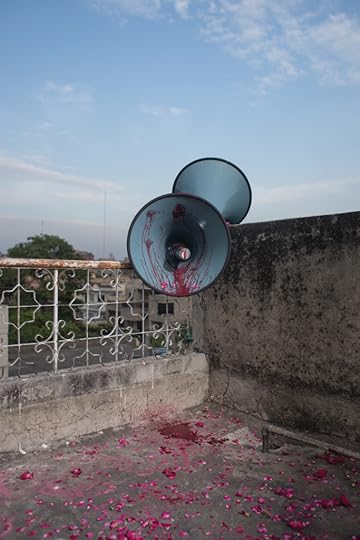 Nida Mehboob, Get Indoors When The Mullah Roars, from the series Shadow Lives, 2017–ongoing. The artist’s work was featured in Chobi Mela, 2021
Nida Mehboob, Get Indoors When The Mullah Roars, from the series Shadow Lives, 2017–ongoing. The artist’s work was featured in Chobi Mela, 2021Courtesy the artist
While the pandemic has emerged as the single most consistent disruptor of our lives, it is important to recognize that it has also served as a smoke screen for other injustices that have swiftly been taking place under authoritarian regimes in South Asia, particularly in India and Bangladesh, during this period. As we grapple with the impact of a virus as a “visible” crisis, what is more insidious is the erosion of civil liberties and fundamental rights, especially in vulnerable communities. CPB addresses this directly through their festival theme, and their curatorial statement, with plans to build a collection of lens-based works that respond to today’s political volatility. This tactic of mediating sociopolitical issues through the arts is not new to this edition. Gayatri Nair, the third cofounder of the biennale, has been doing so via CPB Prism, an arts learning program she runs for adolescents and young adults. (Nair is currently working on a curriculum on masculinity that is communicated primarily through image-based learning tools.) The festival, and its spillovers, can then be seen as interventions into civil society, with a hope to influence public opinion and thought.
A need to respond to ongoing societal realities was also reflected in Photo Kathmandu’s 2018 edition, which hosted filmmaker Amar Kanwar’s The Lightning Testimonies, a multiscreen video projection focusing on the experiences of survivors of sexual violence, especially in environments of conflict in India. With the #MeToo movement erupting in South Asia in the month prior, the exhibition was particularly relevant and programming around it continued for six months, well beyond the five-week festival schedule. “We were reaching out to young law students, young journalists, and practicing lawyers, because the role that law plays in addressing sexual violence was something we were very specifically trying to tease out,” Kakshapati explained, speaking about how the festival and its exhibitions can become prompts for conversations that do not happen elsewhere. Wahab, from Chobi Mela, echoed this sentiment of the festival as a “safe space,” and the need to come together under one roof. He sees this as not only necessary to strategize, but also to “build courage through each other.”
 The Public Life of Women: A Feminist Memory Project exhibition, installation view at Photo Kathmandu, 2018. Photograph by Chemi Dorje
The Public Life of Women: A Feminist Memory Project exhibition, installation view at Photo Kathmandu, 2018. Photograph by Chemi Dorje Courtesy the artist
What became increasingly evident through my conversations with these festival directors and curators was the need to focus on intellectual as well as community involvement in the time between festival editions. While the event itself may be a trigger, or a starting point, many engagements really take shape and form after the frenzy of the opening week subsides. The day The Lightning Testimonies closed after its six-month run at Photo Kathmandu, a new initiative called Imperfect Solidarities (IMSOL) was launched. Unwilling to give it a binding definition, and aligning with its fluid nature, Kakshapati described IMSOL as a methodology that relies on narrative psychotherapy tools to cultivate “nonjudgmental conversations” and an “opportunity to create time and space with people who you feel some kind of community with.” As an example of how an image-based work can serve as a prompt for larger, time-intensive conversations on issues that are plaguing society, this initiative helped foster knowledge-sharing beyond the presence of the work itself.
Chobi Mela perhaps has the longest experience with this kind of interdisciplinary exchange with photography, as well as with extending the concerns raised by the festival into the interim period between two editions. Two of the festival’s parent organizations—Drik and Pathshala—engage with civil society throughout the year, as in November 2019, when Drik organized an event on the necessity of prison reform, marking the anniversary of the release of its managing director, Shahidul Alam. Alam, who had been abducted and then jailed for criticizing the Bangladeshi government, shared his experience along with other previously incarcerated individuals. Wahab, when speaking about the future, emphatically says, “Shahidul is our logo, Shahidul is our flag,” while also admitting that the way forward for the medium is to “embrace its transformation.” With Chobi Mela, as well as other initiatives in the region, opening up their doors to cross-disciplinary practice as well as new forms of visual culture, Wahab’s words help root this transition to a purposeful intent—“the medium is only the tool or voice with which we want to question power.”
Read more about South Asian photography communities in Aperture, issue 243, “Delhi: Looking Out/Looking In” (Summer 2021).
August 24, 2021
Gregory Halpern on the Impossibility of Documentary Photography
Stanley Wolukau-Wanambwa: This new work you’ve made is a little unusual relative to your earlier work, in that you’re making photographs in a place that’s distant from you and relatively unknown to you. Up to now, you’ve only made work in the US, and yet here, you’re making work on the Caribbean island of Guadeloupe. How does your relative distance from it all inform the way you’ve approached the project?
Gregory Halpern: It’s true—a lot of my work is about the American experiment, its promises, its failures, and trying to look at that in new ways. But in Guadeloupe, I felt overwhelmed at times by the sense that I was such an interloper. The constant awareness of being a white, American man with a camera in the Caribbean, the relationship between photography and colonialism, the fear that I was no more than a glorified tourist—all of that was creatively paralyzing at times.
For the Immersion commission, I was asked to propose a project based in France. I spent a lot of time thinking about how and where I could work in “mainland” France. I struggled with that question until I realized that it might be interesting to think about France through the experience of a former French colony and landed on Guadeloupe, a modern-day “overseas region” of France.
The barriers were much larger than in previous projects, and my French is pretty poor. Plus, the weight of history there felt immense; it felt unknowable to me in a way that I wasn’t used to. So I felt much less confident at first editorializing in Guadeloupe than I did in, say, Los Angeles—which by comparison I knew quite well, and where I felt more comfortable imposing my vision on the place.

Wolukau-Wanambwa: What was notable to me in looking at the first and then especially the second edit of the book, was the extent to which you’ve found a means to address concerns that I’d argue are integral to your ongoing project as an artist, but from Guadeloupe. I see you looking at death and violence as they’re figured in the earth, in symbols, and on bodies; I see you working across an epic register of forms of light: that seems to me very consonant with your ongoing work.
Halpern: I’ve never been one to make quick photographic visits, especially to foreign countries, so making this work in less than three months was a challenge. I like to sit with the work, show people, figure out what’s working and what’s not, and then return to making pictures with a more informed vision. Both ZZYZX [2016] and A [2011] took five years to finish, and Omaha Sketchbook [2009/2019] was made over fifteen years. But I think you’re right that almost whatever I photograph, I tend to think about the same sets of issues, and want similar ideas and feelings to drive the pictures.
Wolukau-Wanambwa: Do you worry at all that there might have been a different story to be told, but that you were incapable of telling it, whether in this accelerated time frame, or perhaps at all?
Halpern: I worried about both. The time constraint forced me to be productive, but the fear was that I would be desperate to come back with images, without having the time to consider if they were the right images. And yes, a story I couldn’t tell was a story from the perspective of an insider. I worried whether that story would be more compelling than mine could ever be.
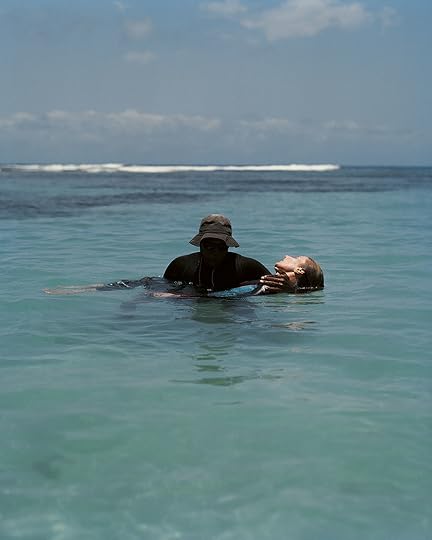
Wolukau-Wanambwa: For me, from your vantage point as an outsider, the photograph that most powerfully forces us to reckon with the continuities and discontinuities pursuant to slavery, colonialism, and their aftermath is the one of a dark black male figure with the fisherman’s hat, who stands in the water, carefully carrying the recumbent figure of a white woman. It’s incredibly beautiful, and it’s suffused with the explosively uneven nature of racialized difference, which is as central to the United States as it is to colonial France. I imagine, or I hypothesize, that your way “in” to making work in Guadeloupe might have been to look at it as someone who is an inheritor of settler-colonial violence, and to make work from that standpoint.
Halpern: You’re right that the histories of the two places are not entirely dissimilar, but the trauma of slavery and colonialism somehow feels so much more raw there than in the US. Perhaps the contemporary, semicolonial relationship with France continues to irritate those wounds? But also, the vast majority of the population of Guadeloupe is black, which helps ensure that that history is not relegated to the margins. There’s an incredible number of slavery-related memorials, for example, and there’s nothing like that in the US. They address very directly the violence and trauma of the past, and picturing them was simply one way of trying to visualize that history.
As for the photograph you mention, I liked how that moment was hard to read. Who is playing what role? Are the arms of the dark figure protective or menacing, loving or servile, a reference to the “utility” of colonialism’s past—or present, for that matter, because it’s the labor of locals that carries tourists, as if they were weightless, through their island vacations.
For a picture to work there has to be something that defies expectation, that surprises or unsettles or nags at you, something that doesn’t just reaffirm what you already know or feel. For me, that picture did that.
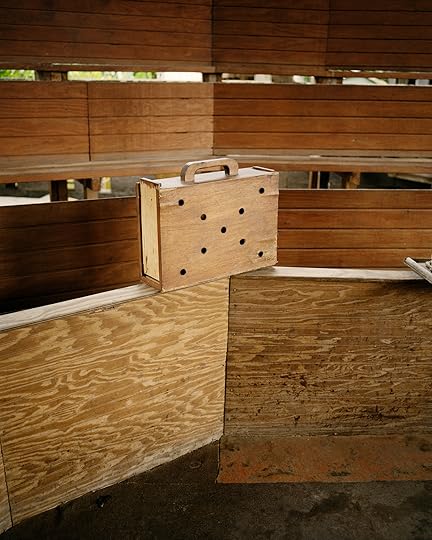
Wolukau-Wanambwa: Did you try to photograph regular forms of labor and activity? Were you thinking about work specifically? Did you make a choice to more or less avoid the tourist trade?
Halpern: I tried photographing the tourist trade at points, but the pictures were caricatures or one-liners. I couldn’t seem to get past the sort of ridiculous look or “character” of the tourist. There’s a clichéd or clownish image of tourists we all know—bad style, pasty skin, camera, English spoken with an air of loud entitlement—it’s an image we know, true or not, and my pictures sometimes couldn’t get beyond that reference. Or if they did, they functioned within the book to suggest two polarized worlds—tourists and locals— which is a legitimate way of viewing the island, but it made for a more reductionist reading of the book. The individuals pictured became symbols of one group or another, and it felt somehow an injustice to everyone.
In relation to labor, I have recently gone back to Guadeloupe to make a video, which touches on it. There’s a market in downtown Pointe-à-Pitre near the harbor, and when the cruise ships dock, hundreds of tourists flood downtown for a few hours. They stroll into the market and inevitably photograph the women working there, usually without asking permission. The women sometimes respond by yelling “no photo” at the tourists, annoyed that they haven’t asked permission, or bought fruit, or even said hello first.
I sat there one day and watched the dynamic, mesmerized. It was unsettling. I was shocked by some of the tourists’ brazenness and disrespect, shooting as if on a safari, not talking or making eye contact. I found myself sympathizing squarely with the workers as they yelled at the tourists, and yet I also couldn’t help but recognize myself, at least to a degree, in the tourists. There was something quite powerful and instructive in that dynamic being laid so bare.
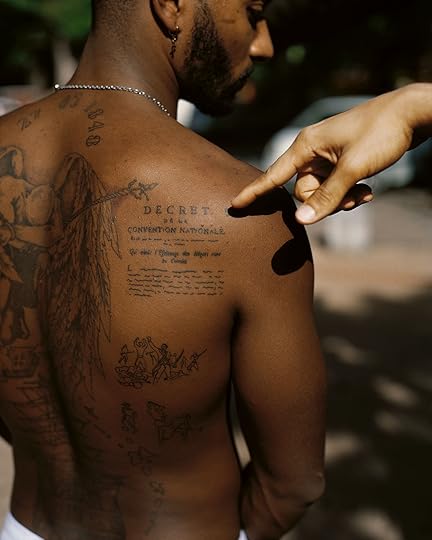
Wolukau-Wanambwa: I can certainly see how heavily the images you excluded would skew the balance of symbolism in the book toward fundamentally external concerns. They sound a loud, interrupting note. Are there other images in the book that emerge from you trying to look outward from a Guadeloupean perspective, or from following an island dweller’s instructions or invitations as to where to go, or where to look?
Halpern: Maybe half of the images are the result of advice from a Guadeloupean. I tend to wander and talk to a lot of people. I’m sort of a sponge when I have the camera, accepting just about any invitation, picking up hitchhikers, following stray cats down alleys, et cetera. I often start the day with a vague plan, maybe choosing a spot on a map or returning to a place where the light was poor previously. I rarely stick to the plan, but the plan is an important starting point, because it gets me out the door.
Wolukau-Wanambwa: Can you describe a few of the conversations you had with people in Guadeloupe as you made the work, and perhaps speak to the extent that they’ve varied from or mirrored conversations you had in Los Angeles or Omaha, Nebraska, or Buffalo, New York?
Halpern: I think my conversations are pretty similar no matter where I am, but it was definitely more of a challenge to connect with people, because my French is mediocre and very few people are fluent in English there. There were a lot of photographs I couldn’t wind up making well because of language, and perhaps because of my timidity as an outsider, but nonetheless, I occasionally still made strong connections, and that’s always amazing when that happens. Twice in my life, I’ve made portraits of people where the only communication was with hand gestures and facial expressions—once there was a lot of smiling and laughing at ourselves, and once it was just really silent and peaceful, but both times were intense and beautiful experiences.
It’s always hard photographing people, though, even when you speak the same language. I’m pretty introverted, and I usually still have to work up the nerve. I tend to approach people in a sort of formal way—respectful, positive, honest, and direct about what I’m doing. I’m always aware of what a huge ask I’m making. I’m aware of the skepticism I’d feel if a stranger approached me on the street asking for a portrait, and that’s always in the back of my mind. And I carry a little laser-printed card that I hand to people, so they know how to reach me if they want copies of pictures. A lot of people don’t follow up, but I think the gesture is appreciated nonetheless.
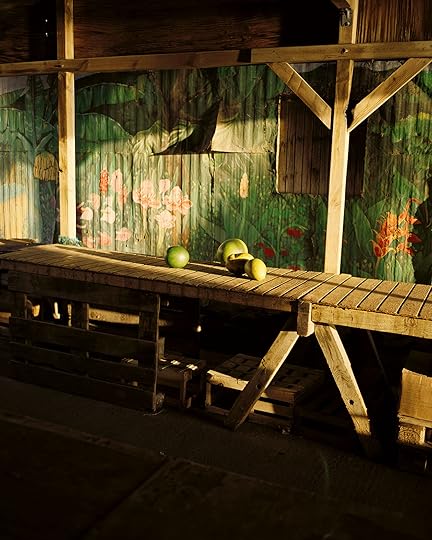

Wolukau-Wanambwa: Can you speak about the ways in which your Jewishness informs your sensitivity to ethnic and racial difference? I’m thinking about the ways that certain racial and ethnic differences can go unobserved, and the ways your own personal experiences might attune you to the different, but related, inequities that others suffer.
Halpern: I’ve generally been uninterested in making work about myself or my identity, but increasingly, I’ve come to think my Jewishness is a powerful reality in the background that has deeply shaped how I see. My brother and I were the only Jews in our high school in Buffalo, and there was the sense that it was wise to just “pass.” Oddly that sentiment has lingered, and I sometimes still find myself wondering whether or not to “out” myself in conversations. My grandfather fled Hungary just before the outbreak of the Second World War and snuck into the US illegally because of anti-Semitic immigration laws. I am alive because he made that journey. The family who stayed in Hungary was almost entirely killed in extermination camps by the Nazis, although my great-aunts Olga and Goldie somewhat miraculously survived Auschwitz.
When I was a kid, usually at Thanksgiving, my dad would almost ritually ask my grandfather to tell the story of coming to the US—two weeks hidden in the bottom of a boat, going to the bathroom in the corner. And so this became our family’s origin story—fleeing genocide and sneaking into a country that did not want us. I have a complicated relationship to this story, and over the years have felt various combinations of pain, shame, strength, and pride in relation to it. And then there is the history of those who did not escape—the photographs of the piles of pale, malnourished bodies I somehow saw as a child, and which became, and perhaps remain, the primary association I have with the word Jewish. It’s such an overwhelming experience to see those pictures for the first time, especially as a child, that that becomes your people and your history.
Of course, whether or not Jews came to this country legally, they came of their own volition, not as enslaved people. Whether or not it’s useful to compare griefs, I don’t know, but there is something quite dark and not often talked about in the inherited trauma of Jews. I think it manifests itself in strange ways. It may be present, if latent, in the pictures, which is not to say that viewers need to know any of that when looking at the pictures, but I do think perhaps it’s there. Narratives and traumas across cultures are obviously different, and I don’t make this point to overlook or discredit the singular experience of any one narrative, but I do feel that through art there is the potential for shared experience, for some form of transcendence.
A family photo was taken before the Nazis invaded in 1944. My grandfather had already left Europe, so he is not pictured. Of the rest, all but three were killed in Auschwitz. Of those three, my great-aunt Olga is the only one still alive, at age ninety-two.
All this makes me think of a 2019 New York Review of Books piece by Zadie Smith called “Fascinated to Presume: In Defense of Fiction.” It’s a remarkable piece, running counter to the current mood, that argues for the potential value of portraying the “other” as a possible form of connection:
[W]hat insults my soul is the idea—popular in the culture just now, and presented in widely variant degrees of complexity—that we can and should write only about people who are fundamentally “like” us: racially, sexually, genetically, nationally, politically, personally.
She goes on to argue that in our own deeply personal, unique experiences of grief, there is the potential for us to know each other:
I was fascinated to presume that some of the feelings of these imaginary people—feelings of loss of homeland, the anxiety of assimilation, battles with faith and its opposite—had some passing relation to feelings I have had or could imagine. That our griefs were not entirely unrelated. . . .
What do I have in common with Olive Kitteridge, a salty old white woman who has spent her entire life in Maine? And yet, as it turns out, her griefs are like my own. Not all of them. It’s not a perfect mapping of self onto book—I’ve never met a book that did that, least of all my own. But some of Olive’s grief weighed like mine.

Wolukau-Wanambwa: I think that you’ve often made photographs that engage with the production of difference, or the individuated experience of racial difference particularly. I’d argue that your sensitivity to, and your compulsive interest in the forces that shape how we might articulate our inchoate selves, and the forces that might limit our capacity to be receptive to others, are central to much of the work you’ve made. One thread that runs through some portraits is a powerfully reflexive figuration of difference. You make photographs that point to the activity of picturing in complex and expressly racial ways. Do you think that your sensitivity to the reduction of Jewishness to images of emaciated corpses, or the reduction of Jewishness to anti-Semitic tropes that are expressly visual, might inform your relationship to imaging more broadly? I think about this as a black photographer too: I know how the power of looking can shift suddenly, radically, and all too often dangerously, and that has a meaningful effect on the ways I think about seeing and about images.
Halpern: That’s a great question. I don’t know the answer. But I think there’s something fascinating there—especially when I think about the ability of images to work powerfully on our unconscious mind, and how susceptible we are to being manipulated visually, be it through propaganda or advertising.
At the same time, I’m pretty skeptical of the power of images to transform reality or to create change. More and more, I’ve come to feel that change happens almost exclusively through protest and direct political action, when enough people come together to create a tipping point. I think that the art world is driven too much by capitalism to have any teeth as a political tool. I’m not sure any highly collectible commodity can ever really bite its owner, so to speak.
On the other hand, making art is a way of participating in a conversation, and conversation is perhaps the starting point for all change. The images of the [extermination] camps, for example, transformed reality for me. As did a book by Milton Rogovin, which I also saw when I was a boy. Rogovin lived and photographed not far from where I grew up in Buffalo. He made portraits of the same people over the course of twenty-five years, and when I first saw his work, as a teenager, I was shaken to the core.
I remember feeling confused, almost ashamed, that these pictures of strangers had moved me to tears. I hadn’t known art could do that. That book changed the course of my life, and so in that sense, I can’t deny the power of images to create change.
The impact of images is so hard to quantify. It’s so internal, like they skip past the cerebrum and get deep inside, into the body. It’s like they have the power to bypass the conscious mind and infiltrate without us knowing how, or what they’re doing once they’re inside. We think we know what we’re seeing, at least we tell ourselves that. But it’s more like we never really know what we’re seeing.
What about you? Are you ever discouraged to think that what we make are “just pictures”?
Related Items
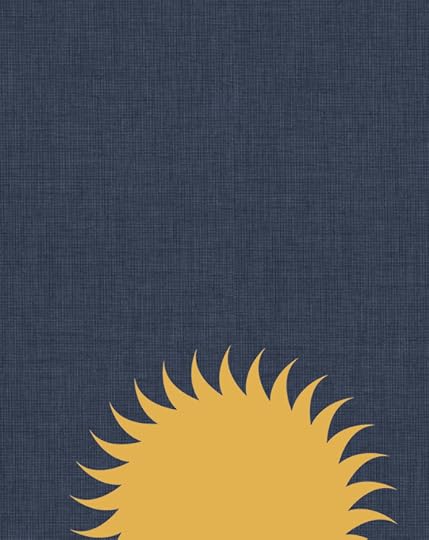
Gregory Halpern: Let the Sun Beheaded Be
Shop Now[image error]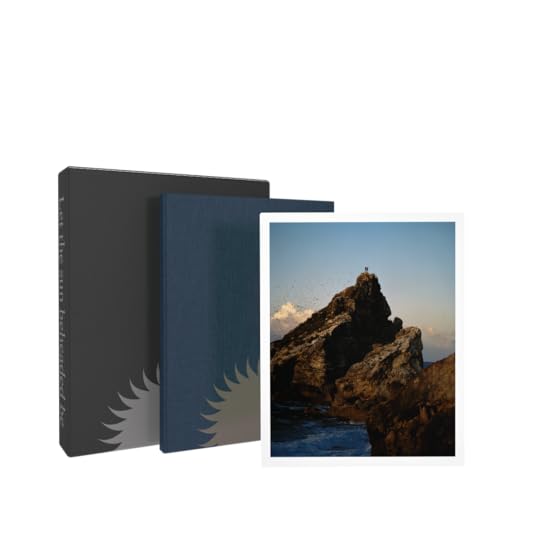
Let The Sun Beheaded Be: Limited Edition
Shop Now[image error]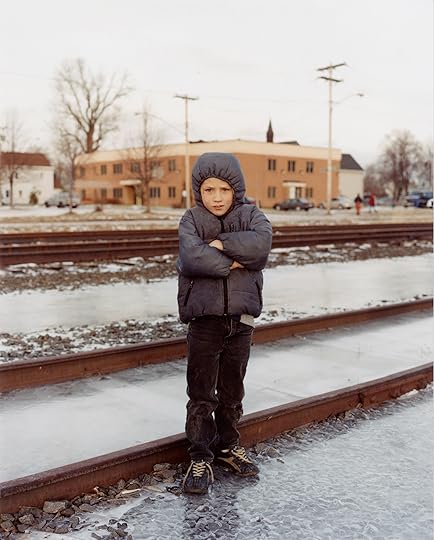
Gregory Halpern’s Lyrical Chronicle of a Rust Belt City
Learn More[image error]Wolukau-Wanambwa: I recognize precisely the quandary you’re describing, if that’s the right word. How can making objects that circulate in relatively or absolutely small numbers for middle-class people, or infinitesimally in even smaller numbers for wealthy collectors and institutions, be considered a form of radical political action? I get that, and I’d agree that it’s not. I think that there’s a very good case to be made that says that these activities are not inherently radical forms of political action, and that they cannot be divorced from normative politics either.
I think we’ve also certainly seen meaningful social and political mobilizations in physical space as a response to both art images (Dana Schutz) and to the terrible realities approximated by nonart images (Michael Brown, Eric Garner). The circulation of those images does have real-world consequences, even though we need to be careful in those cases not to mistake the image for the real.
Do you think that a viewer of your work would respond differently if they viewed your photographs as fiction rather than as indexical fact? Would adopting the stance of storyteller—à la Zadie Smith—rather than documentarian, alleviate any of the contemporary concerns we’ve been discussing around difference and the structural violences meted out against the marginalized? I have this sense from so many discussions in the contemporary American classroom, that the identity position of the author matters far more than genre today.
Halpern: I agree with you about the emphasis on the author’s identity position, especially in the American classroom. After centuries of (mis)representation, there’s a need for marginalized groups to take ownership of their own narratives. And increasingly that’s being celebrated, and that’s essential. But in my eyes, it doesn’t eliminate the need to connect, to try to create something transcendent, or to look for the shared weight of experience across those lines that separate us.
Lately, I’ve been thinking about Marina Abramovic ́’s The Artist Is Present—when over the course of nearly three months in 2010, for eight hours a day, Abramovic ́ sat in a chair at New York’s Museum of Modern Art and stared into the eyes of one person at a time, often for longer than five minutes each—and thinking about how so many of those sessions ended in tears. As children we’re taught not to stare, especially at strangers, and among adults, staring is often considered offensive or threatening. I’ve always been fascinated by how, through portraiture, the face of a stranger can take on meaning for another stranger, how an anonymous viewer can look at that person—a person who should mean nothing to them—and feel something. In an evolutionary sense, there’s no logical reason why one stranger should feel something for another. To me, there is something deeply mysterious and hopeful knowing that we can react to each other that way.
But to get to your question, I see fiction and nonfiction as existing on a spectrum. If science fiction represents one end of the spectrum and journalism represents the other, the middle might be occupied by things like lyric documentary, creative nonfiction, and perhaps, photography itself. I definitely borrow from a documentary tradition and aesthetic, but I have difficulty with the term documentary. It carries so much baggage, and is too often misunderstood as implying indexical fact. Once you claim the authority to understand and represent another’s reality, you’re sort of on shakey ground, as far as I see it. In that sense, to call the work fiction seems more honest.
But it can be both liberating and unsettling to not know how to classify work. When you pick up a book of literature, it’s usually categorized right on the back cover (fiction or nonfiction), and that can be helpful in knowing how to read and process the work. That doesn’t exist in photography, which is interesting.
What about your work—One Wall a Web [2018], for example —how would you classify it in terms of traditional genres?
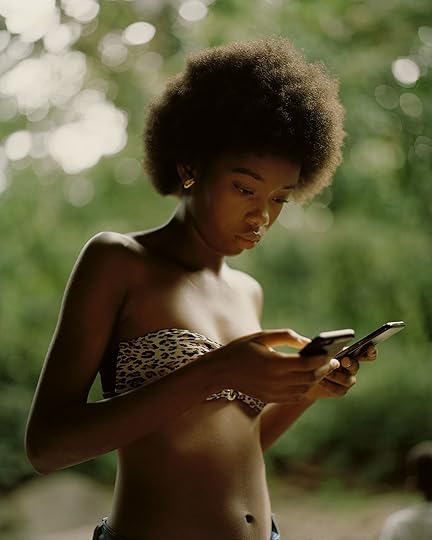 All photographs Gregory Halpern, Untitled, 2019, from Let the Sun Beheaded Be (Aperture and Fondation d’entreprise Hermès, 2020)
All photographs Gregory Halpern, Untitled, 2019, from Let the Sun Beheaded Be (Aperture and Fondation d’entreprise Hermès, 2020)Courtesy the artist
Wolukau-Wanambwa: I think that to some extent (but by no means universally) in this identitarian moment, and especially in the (white) liberal art world, who you’re perceived to be as an artist can often dictate what your pictures can say, which then handily relieves a viewer of working that out for themselves. For me, the term documentary is one that I would want to reclaim in all its inherent complexity, rather than abandon it. I think that what I sought to document in One Wall a Web—far beyond a specific place or person—was the enervated psychic states from which white-supremacist, white-heteronormative violence flows. I wanted to document that violence as a real but also importantly intangible force. I tried, through the structure of the book, to trace its presence and effects on the landscape, in and on and around differing people, and through a history of appropriated photographic images and texts that extended into those images and texts I made in the present tense. In that sense, a lot of my “subject matter” is ethereal, immaterial, and inherently fantasist. So the forms of realism I needed varied over time, and those variances (hopefully) help to break up any notion that there’s one stable, transparent, objective lens through which what’s on offer can be reliably seen and understood.
To come back to your earlier points about the perils and virtues of categories like documentary, I think that maybe we’re focused on a symptom rather than the cause. I think that many of us in the Western world are exhausted, overstimulated and undercooked, overworked and undereducated, full of sensations and terrified of feeling, full of thoughts and uncertain how to think. I think that veridical statements and notionally credible documents (“real” news vs. “fake” news; “documentary” images vs. “fake” images) help to alleviate some of our interpretive anxiety. Simplifying our sense of the world by outsourcing interpretive responsibility for understanding it is appealing, precisely because we’re drowning in false choices all day long. I think that we sometimes need to believe that facts are simple, and that documents are true.
Halpern: I think you’re right, and in a way, that’s what concerns me about photography—that at times we all want to be fed facts, that we want to trust what we see. It’s unsettling to think of photography as fiction, but I think it can be useful.
Earlier, when you critiqued the notion of art being “reliably seen and understood,” I was struck by the idea of reliability and found myself thinking about the unreliable narrator in literature. I love the idea that a reader can’t trust an author/artist even when they appear to be telling the reader what to think. It forces the reader/viewer into the uncomfortable, but important, position of having to decide for themselves.
I am thinking here of the way William Faulkner’s The Sound and the Fury [1929] might get at the messy truth of a single family more than any traditional documentary about a family might. As a narrative strategy/structure, it’s just such a beautiful way of speaking to the impossibility of “telling the story” of a single family, in all its inconsistencies and contradicting truths. In that sense, I find the deliberately fractured nature of One Wall a Web, with its multiple “narrators” or “voices,” similarly beautiful and a fitting way of documenting, as you say, the “enervated psychic states from which white-supremacist, white-heteronormative violence flows.” That is an impossible thing to “document,” as I see it, but the dilemma of that impossibility is one of the things I find compelling about the work, and I like that you don’t shy away from the word. Maybe for documentary to be reclaimed, it needs to be embraced in that way, by artists who are working in profoundly innovative and experimental ways, who celebrate not only its potentials but its pitfalls as well.
This interview and images were originally published in Let the Sun Beheaded Be (Aperture and Fondation d’entreprise Hermès, 2020).
Aperture at Photoville!
Brooklyn Bridge Park, Pier 1
2 Furman St
Brooklyn
August 22, 2021
Celebrating "The Colors We Share" with Angélica Dass
Creator House
35 E 21st St
New York
August 18, 2021
How Women Artists in South Asia Are Reinventing the Photobook
Photobooks force us to think outside and beyond the photograph. They serve as activist tools and sites for introspection. In South Asia, photobooks have experienced remarkable growth in recent years, instigated by artists’ urges to tell personal stories related to their social, political, and cultural situations. This gesture carries the belief that these stories are worth telling, that they can act as connective tissue between people in a global nervous system. The photobook experience—understood as the compilation of skillfully produced pictures and texts, held in one’s hand and savored, attentive to aesthetic and intellectual pleasures—can arguably be traced in India to the Islamic book, especially Mughal-era muraqqa, which contain painted images and writings. In the nineteenth century, the Indian photographer Raja Deen Dayal’s albums, with their careful arrangements of texts and images documenting architectural heritage, military maneuvers, and VIP visits to princely territories, and assembled by hand as multiples, can be considered photobooks in today’s terms.
Through the late twentieth century, the cost of publishing in India was prohibitive, despite the diversification of photographic practices. Those who found ways did so outside the country, such as Raghubir Singh, whose photobooks captured a sense of geographic and cultural contemporaneity. Dayanita Singh has been recognized for rethinking the photobook by playing with scale, materiality, and the nonstatic sequencing of images. The economic liberalization of the 1990s in India led to better quality and more affordable publishing opportunities with specialized printers in tune with photobook and self-publishing cultures. Initiatives such as BIND, the Alkazi Collection of Photography photobook grant, and the Delhi-based Offset have encouraged a new generation of image practitioners.
From her home in Toronto, the curator Deepali Dewan recently spoke by video with two compelling makers of photobooks: Indu Antony, a Bangalore-based artist, and Kaamna Patel, a Mumbai-based photographer and founder of JOJO Books. Together, they discussed new works made just before and during the pandemic lockdown, and how photobooks can give visibility to women’s experiences.
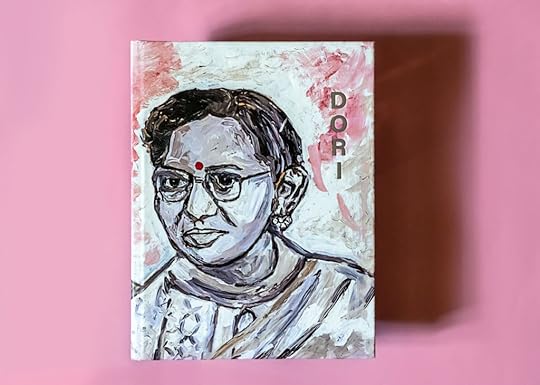 Kaamna Patel, cover of Dori, 2021
Kaamna Patel, cover of Dori, 2021Deepali Dewan: In India, the energy around photobooks and self-publishing that’s going on, is so relevant to the larger global practice of photobook making. Both of you are at the forefront of that energy and creating some of the most exciting examples. Kaamna, photography is the main aspect of your visual practice, and through that, you’ve come to photobooks. What led you to making books? And Indu, you have a varied artistic practice of which photobooks have been a more recent aspect. At what point did you turn to photobooks as a part of your practice?
Kaamna Patel: I discovered photobooks through a friend who was already working with them. It was actually thanks to him that I really understood what it means to publish, or even self-publish. In my head, I said, Wow, you can self-publish? Why have I been knocking on the doors of galleries all this time? That’s the reason I decided to self-publish. Then the risk is mine, the loss is mine, and if there’s any success in reaching out to people through this, well, then, I will have done it, and I will know for sure whether my voice is worth amplifying or not.
Indu Antony: I did my first-ever photobook project in 2008. Surprisingly, I found it the other day, and I thought, Wow, I didn’t even know this was a photobook. At the time, I had attended a book-making workshop, and I was really excited about the idea of making books by hand.
I am part of a collective called Kanike. We are four artists who get together, share a space, and also make work collaboratively. Jolly Bird (2020) is the first piece that we did together, reflecting on what we went through during COVID, when the lockdown happened from March onward. The book comes with a small note describing our lockdown experiences. The title Jolly Bird is after a song by S. P. Balasubrahmanyam, who we lost during COVID, and the work opens with his lyrics. It’s a small dedication to him.
The book follows the different things that we did during the lockdown period. For example, for the forty days of the lockdown, which were quite intense, every day at 5:20 PM, I would record ten words that describe how I felt that day, such as lonely, love, sex, I, no, scooter, eraser, isolation, me, and off. It was a way to relieve my anxiety. We also used a lot of the news headlines and images from the lockdown: “Bengaluru police is using drones trying to find lockdown violators.” “Sales for sex toys rise 65 percent in post-COVID-19 lockdown: Karnataka stands second.” We made just fifty copies of the book, and it was so surprising that within twenty hours all fifty copies were sold out. We were quite shocked to see how people were responding to this collective book.


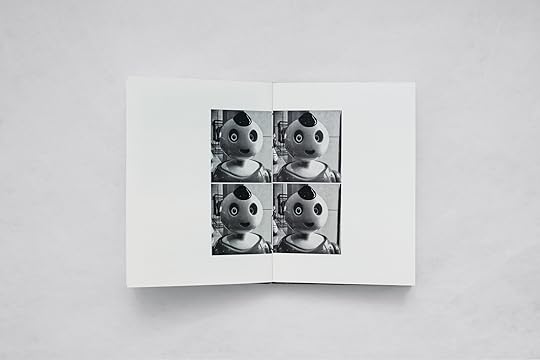
Spreads from Indu Antony and Kanike collective, Jolly Bird, 2020
All works courtesy the artists

Dewan: Why Can’t Bras Have Buttons (2021), rather than a bound book, has loose pages collected in a box that opens up, and each page has a photographic image on it with text on the back corresponding to that image. How did this come about?
Antony: During the lockdown, everybody went into an extensive cleaning of their homes as I did. I found mountains of boxes that I’ve collected with objects from my life. I wanted to slow down. Though everything around was still, my mind was not still. So I started taking out each of these objects, and, at that point, I had only watercolor papers. So I was like, Okay, let me stitch each of these objects onto the paper using a strand of my hair and see what happens. The idea of having the book in the form of a box, where you open it with a tiny window, indicates a small window into my life—who I am. The box is made of Kora cloth. I went hunting for Kora cloth, which are rejects from the railways in Bangalore, and got someone to actually make those boxes. And then the box actually went into another Kora cloth bag stitched by me.
Dewan: Kaamna, your most recent projects are In Today’s News: Alpha Males and Women Power (2019) and Dori (2020). Can you describe these projects and give a sense of their materiality?
Patel: Dori means thread in Gujarati. I was playing on the idea of a “thread” that joins me to my grandparents, the focus of the book, and eventually that will join their story to future generations. I put everyone to work, and it became a family project, in a way. My aunt, who is their daughter, did the painted portraits of my grandparents reproduced on the front and back on paper that feels like canvas. She’s a dentist and also an artist. Actually, this book was a collaboration between all of their kids and me. At the end, there is a text in Gujarati and in English. One text is my voice, and the other text is a foreword by Veeranganakumari Solanki, who is a curator and a writer. My other aunt, who lives in LA, helped with the translations of both texts.
In Today’s News was made with yotsume toji, a type of Japanese binding, and with unbleached, uncoated paper that gives it a yellow tint. Essentially, the book opens with an image from the newspaper. And the title as well comes from a headline that I found in the newspaper. This project basically started as Instagram stories.
It was also a response to the fact that the #MeToo movement was still strong in India. I realized that through the exercise of making those Instagram stories, I had a lot of concerns cropping up in my mind, and I thought maybe I should put them down and see what comes through. The themes for me were primarily women’s sexuality; the evolving role of women in society, whether as a moral support system for men or as more independent, working individuals; and issues related to victims of domestic abuse. It was just kind of an outpour. I had this whole collection of images on my phone, and then, when I decided to actually explore it a little more, I started scanning and using a better camera.
 Kaamna Patel, spread from Dori, 2021
Kaamna Patel, spread from Dori, 2021Dewan: Has this past year in the lockdown been, in some ways, a generative and creative space for producing photobooks?
Antony: I don’t think either Why Can’t Bras Have Buttons or Jolly Bird would have happened if not for the lockdown. Why Can’t Bras Have Buttons developed because I was so craving touch. Looking at those objects in my memory boxes was like a certain kind of calmness. Not only were there good memories, but there were also heavy memories in them. But at least I had the tactility of touching them. So it came out of that space.
Jolly Bird, also, is a result of 2020’s events because all four of us were looking at how to survive the pandemic: What are we doing with our surroundings? What were we making and reflecting on? We put all of that together and then made the book.
Even though we find ourselves in a place where you can receive threats just for expressing yourself in your photobook, I hope that in a couple of years that will change. I think that’s a risk you take if you’re going to bare your soul in your work.
Patel: Actually, I wasn’t even thinking about making books that year. I took to writing, working on grant projects, proposals, residency applications, things like that. It was toward the end of 2020 when I realized Dori was almost there. It had been in the making for five years. I had done many different versions of it and many different edits, and I finally had come to this almost final stage. It was just about picking the format and getting the design elements together. So it was quite an impulsive decision. I said, Okay, it’s ready.
Dewan: To what extent do you find the photobook a space that is a good platform to bring forward a landscape of the personal? What does the photobook allow you to do that another format doesn’t?
Patel: Because books are small, for the most part, and intimate, you hold them close to you. As a reader, once I have the book, once I open it, I choose how much time I spend with the images, how I go back and forth through the pages, where I read it, whether I read it in my personal space, whether I read it in a public space. All of this allows you to experience somebody else’s story as if it were your own. That’s why it’s so conducive to communicating, honestly and candidly, a story that maybe you wouldn’t otherwise want to put up on the wall.
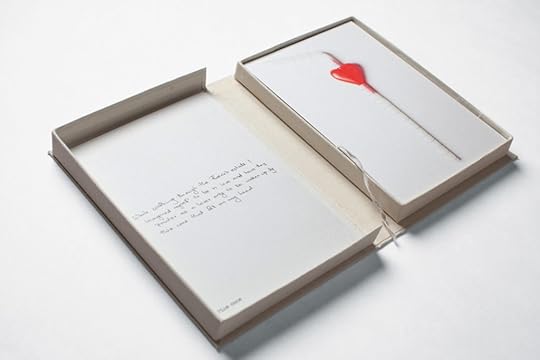 Indu Antony, Why Can’t Bras Have Buttons, 2021
Indu Antony, Why Can’t Bras Have Buttons, 2021Antony: Why Can’t Bras Have Buttons is a project in itself, and none of it would ever exist in any other format than this particular book. It’s a great format for people to express their personal narratives.
Dewan: Your work gives a certain attention to women’s lives that doesn’t often get seen in a public sphere. How do you feel the photobook allows you to do that? Kaamna, In Today’s News is as personal as Dori, because these are your selections from newspapers. I recall hearing you say that decontextualizing a newspaper image from its context and putting it together with something else creates a different kind of narrative that is very much about your reading of the popular press. But both works also occupy the space of giving visibility to women’s experiences and women’s lives in a different way than is often represented in the public sphere. Can you talk about that?
Patel: You are absolutely right. That is exactly what I was thinking of when I was taking these images out of their context and putting them into diptychs that made sense to me as diptychs—so basically putting them straight into another chronology. That’s because I really believe that images are very, very powerful in the sense that they show truth, but they can also show lies and make you believe they’re true. And somewhere in that middle ground is where you can arrive at a subjective truth, which reveals to you something not only about yourself but about what you understand about the world, your perspective on life, and everything else. So in that sense, yes, it’s deeply personal.
But as far as using photobooks to create a feminist space, I wouldn’t say that I am doing this actively. It’s definitely not an agenda that I am chasing. It just so happens that I am a woman who has been raised to be independent in a country like India. So the feminist message is really just a part of my story and a part of my life. It’s just natural to me. So it’s only natural that it comes out within the work I make because that’s the lens with which I view the world.
Antony: Why Can’t Bras Have Buttons, even though it’s about me, also talks about some form of abuse, some form of what my body has gone through, my own identity. Which is why it’s not all beautiful memories, but it is also about my existence, and my gender, and what I as a person have gone through.
Related Items
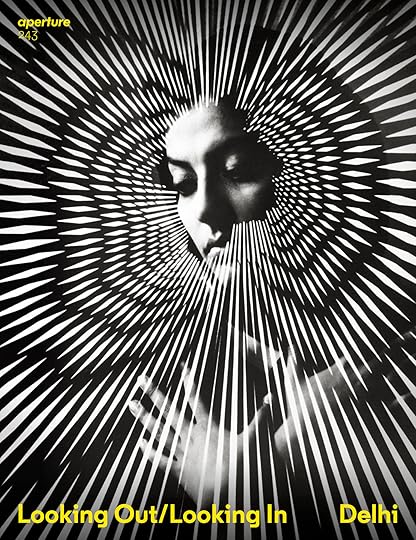
Aperture 243
Shop Now[image error]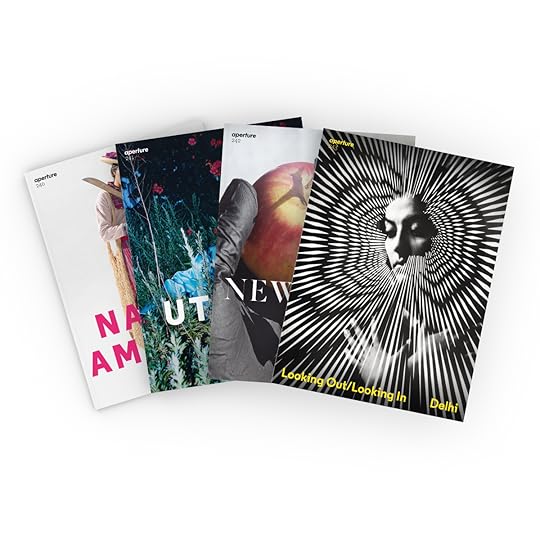
Aperture Magazine Subscription
Shop Now[image error]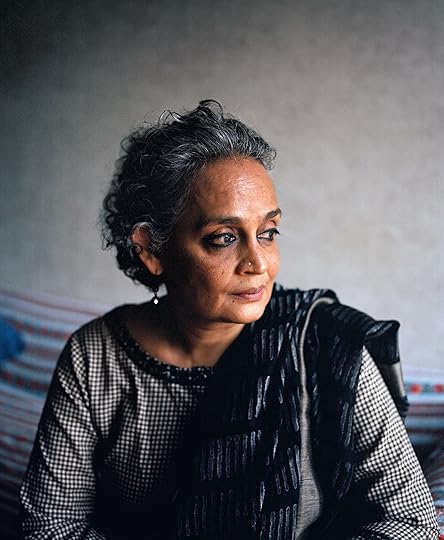
Arundhati Roy Sees Delhi as a Novel
Learn More[image error]Dewan: It feels like a very raw and honest representation of female life, and at the same time something that, I imagine, is very relatable for many of us. Do you feel there’s risk in that, in putting out this aspect of women’s lives in a space like India, or even in the world?
Antony: Since my book was released, someone wrote to me through Instagram, and he started threatening me. It’s still not an easy thing, because it took a lot for me to be as vulnerable as possible, to put out a book such as this one, to talk about things that my closest friends would not know. But I felt it was, in some way, important to do so. So, yes, it’s not easy.
Patel: Being a woman in India, and generally a woman in a man’s playground, at some point in your life, you are going to have to face abuse. Speaking out in a country like India is difficult because of this sense of the self-appointed moral police that encourages repression in our society, which eventually leads to us not being able to talk about our sexuality, or our needs, or things that are happening to us. It’s the shame culture that we live in—that’s probably where it’s coming from.
But I feel like it’s definitely changing. And the support systems for artists who speak out are growing. So even though we find ourselves in a place where you can receive threats just for expressing yourself in your photobook, I hope that in a couple of years that will change. I think that’s a risk you take if you’re going to bare your soul in your work, because you are speaking things that either nobody wants to hear or everyone wishes they could say, and so you find solidarity in it. Either way, it has to be done.
This article originally appeared in Aperture, issue 243, “Delhi: Looking Out/Looking In,” under the title “The Photobook as Public Space.”
August 16, 2021
The Photographer Confronting the Restlessness of Lockdowns
Tirtha Lawati was born in Nepal and raised in Britain. He grew up across a number of counties—Kent, North Yorkshire, and Warwickshire—before studying photography at Warwickshire College, and then fashion photography at London College of Fashion. His editorials published in Vogue Italia and Dazed narrate fashion collections designed by his peers, of models at ease in clothes worn with confidence; but his own portfolio documents the tentative experience of first-generation Asian youth in the UK, suspended between the worldview of their parents and the accommodation of British values. For Lawati, the boundaries of the home also express this tension: “I have been exposed to two identities, one being inside the home, and one being outside,” he tells me. He describes his ongoing project Nyauli as a call for home. It refers to the Great Barbet (Nyauli), a bird native to Nepal whose song, according to folklore, is that of a lost lover.
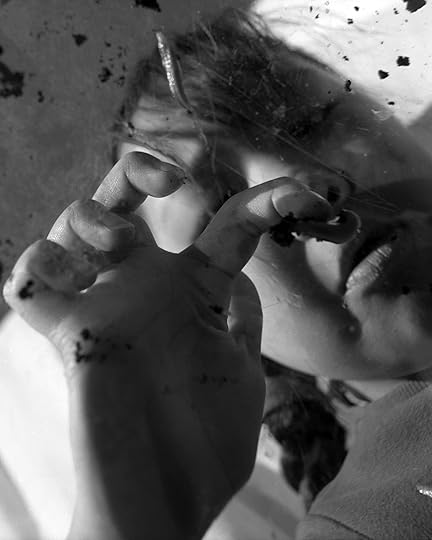

The UK’s COVID-19 lockdowns forced Lawati to confront his own conception of home over an extended period of time spent in close confines with his extended family. What started as practical exercises to stem his restlessness—teaching himself the qualities of natural light by shooting in the garden at dawn, trying his hand at nature photography, or taking portraits of his nieces during breaks between home-schooling lessons—soon developed into a studied depiction of domestic life based on his own compositions. Lawati works by first drawing his portraits and then staging them. This process lends the images a somewhat studied sense, as though they are vignettes in which his family are the protagonists.
“I wanted to do something to transform bleak times into something playful, something like a reality,” Lawati says. His project was produced partly out of the prevailing restrictions, so he had to use a postal lab service to develop the analog film. Despite the pandemic’s varied obstacles, this new body of work, published here for the first time, is finely observed and supplies the distraction of small details.
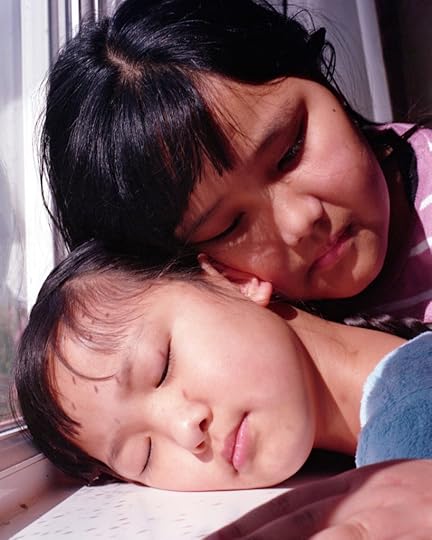
The photographs are strangely familiar. They speak of roles and responsibilities in family relations but in unlikely terms. A blanket drying on a clothesline envelops a matriarch, fists raised, a smile on her lips, and a beanie pulled over the crown of a wide-brimmed summer hat; an older man rests the fullness of his palm on his head in a gesture of self-possession; a girl dozes as she inhales the hair of the younger sister in her arms. They are tender likenesses that radiate with a sense of security in being held.
Lawati’s nieces became a particular focus, as they were the same age that Lawati and his sister were when they first arrived in Britain to confront a new life and a new language. The struggles of Lawati’s assimilation is lost on the two young girls, who speak English as their mother tongue. Lawati captures the desire to overcome a generational divide in a portrait of his nieces with their hair plaited with lacha, a traditional red hair accessory worn by Nepali women with floral appendages made from raw jute fiber, yarn, beads and threads. Like most young girls, Lawati’s nieces wear the braids their own way, studded with chrysanthemums picked from the garden. One of them raises a hand to the sky, as a plastic dragonfly rests on her fingertip.
The image is inspired by a memory of Lawati’s early childhood in Nepal, when he was fascinated by the dragonfly, attracted by the whirring of its wings as it hovers almost still in midair. Trying to connect experience across a generation’s worth of difference, Lawati depicts the dragonfly as symbolic of living freely, and in the photograph, it is gifted benevolently to his nieces. He intends to continue to photograph them, he says, to follow “how they cope and how they find the answer to their identity or sense of belonging.”
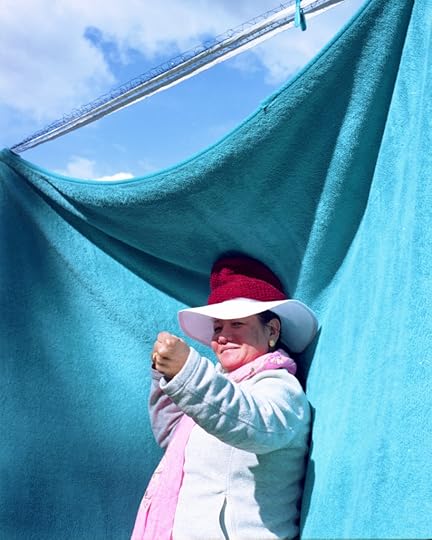
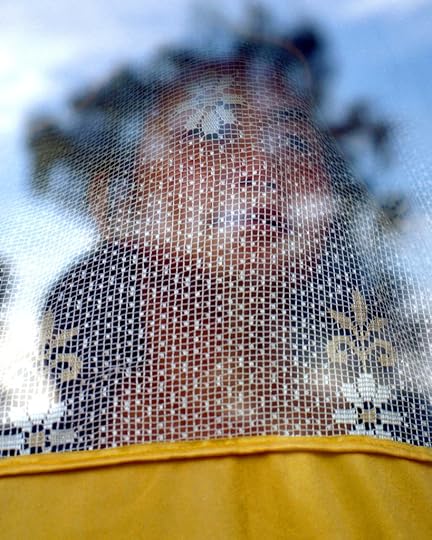

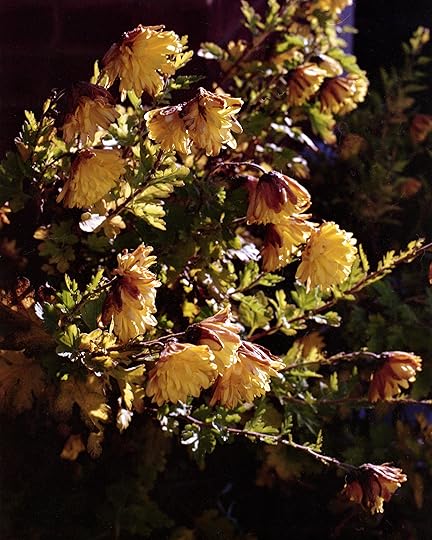



 All photographs by Tirtha Lawati from the series Nyauli, 2020–ongoing
All photographs by Tirtha Lawati from the series Nyauli, 2020–ongoingCourtesy the artist
Read more from our series “Introducing,” which highlights exciting new voices in photography.
August 12, 2021
A Sweeping Reconsideration of Photography and Land Use in America
When Sandra S. Phillips was named curator emerita of photography at the San Francisco Museum of Modern Art in 2016, after three very busy decades leading the department, she had no intention of slowing down. In fact, she was actively at work on what fairly can be called the most ambitious project of her career to date: American Geography: Photographs of Land Use from 1840 to the Present, an exhibition scheduled to appear at SFMOMA in 2020. Lamentably, the exhibition itself was a casualty of the coronavirus pandemic, but the accompanying publication—much more than a catalogue—was published earlier this year by Radius Books in Santa Fe.
 Lucas Foglia, George Chasing Wildfires, Eureka, Nevada, 2012
Lucas Foglia, George Chasing Wildfires, Eureka, Nevada, 2012Courtesy the San Francisco Museum of Modern Art
 Garfield Stack, Oquirrh Mountains and Ancient Beach of Great Salt Lake, from Bingham Mine/Garfield Stack 04.21.06, 2006
Garfield Stack, Oquirrh Mountains and Ancient Beach of Great Salt Lake, from Bingham Mine/Garfield Stack 04.21.06, 2006Courtesy the artist
The book has ninety-four beautifully printed full-page plates plus an illustrated catalogue of the 165 photographs selected by Phillips with Sally Martin Katz, curatorial assistant at SFMOMA. The main text by Phillips is followed by essays by Richard B. Woodward, Hilary N. Green, Jenny Reardon, Layli Long Soldier, and Richard White, and a poem by Beverly Dahlen. A concluding chapter highlights twenty-three photobooks illustrating American land use that “were, until quite recently, the principal resource for understanding the subject.”
An extended preface by the late writer and environmental activist Barry Lopez sets the tone. Before he began discussing the project with Phillips, he notes, she had already assembled extensive photographic evidence of “clearcuts, toxic settling ponds, transmission towers, contrails, open pit mines, stalled traffic, sprawling feed lots, and the rest of humanity’s infrastructure.” At first he urged her to include, in addition, “other, perhaps more welcoming photographs . . . of unmanipulated land. . . . But,” he writes, “I came around to her point of view.” The selection of photographs squarely faces what Lopez calls “the boot prints, if you will, of the colonial invader.”
 Wendy Red Star, Indian Summer, from the series Four Seasons, 2006
Wendy Red Star, Indian Summer, from the series Four Seasons, 2006Courtesy the San Francisco Museum of Modern Art
 Roger Minick, Woman with Scarf at Inspiration Point, Yosemite National Park, CA, 1980
Roger Minick, Woman with Scarf at Inspiration Point, Yosemite National Park, CA, 1980Courtesy the San Francisco Museum of Modern Art
Phillips’s essay skillfully traces the intertwined histories of American photography and land use in America, together with what might be called their metahistories: not just what humans were doing on and to the land, but what they thought about what they were doing; not just what pictures photographers were making but how those pictures reached their audiences and how they were interpreted. She persuasively treats the various threads as aspects of a single story, with the result that many familiar elements are seen in a fresh light.
 Amani Willett, “Hiding Place,” Cambridge, MA, from the series The Underground Railroad, 2010
Amani Willett, “Hiding Place,” Cambridge, MA, from the series The Underground Railroad, 2010Courtesy the artist
The same is true of the selection and presentation of the photographs. Phillips explains that American Geography expands on the groundwork of an exhibition and catalogue titled Crossing the Frontier: Photographs of the Developing West, 1849 to the Present, which she presented at SFMOMA in 1996. Nineteenth-century photographs of the American West have been a staple of photographic history from the beginning, and comparable attention has been lavished upon both the romantic idealism of Western landscape photography in the twentieth century and the critical view of the human footprint that followed: the pictures that rigorously cropped out cars and telephone wires, then the pictures that went the extra mile to include them. Nineteenth-century landscape photography in the eastern US was largely ignored, however. As Woodward points out, that changed dramatically with East of the Mississippi, Nineteenth-Century American Landscape Photography, a major exhibition organized by Diane Waggoner at the National Gallery of Art, Washington, DC, in 2017 and, now, with American Geography.
 Alec Soth, Cemetery, Fountain City, Wisconsin, 2002
Alec Soth, Cemetery, Fountain City, Wisconsin, 2002Courtesy the artist
 Sheron Rupp, St. Albans, Vermont, 1991
Sheron Rupp, St. Albans, Vermont, 1991Courtesy the artist and Robert Klein Gallery
Dramatic as it is, the inclusion of the eastern US is only one aspect of the originality of Phillips’s exhibition. (Partly because the great majority of the original prints belong to SFMOMA or to San Francisco’s Sack Photographic Trust—Phillips played a key role in building both collections—it is not unreasonable to hope that the museum may mount the actual exhibition in the not terribly distant future.) Given the centrality of the theme to American photography as a whole, it is not surprising that the selection includes dozens of familiar, even famous photographs by celebrated photographers. They need to be here, but they sing with a new resonance in concert with an equal number of marvelous but unfamiliar images, some of them by photographers whose names are unknown even to specialists. Many pictures bring the project right up to date, such as Stanley Greenberg’s Coronavirus Shelter, Prospect Park, Brooklyn, New York (2020); other contemporary pictures explicitly point at the past, such as one made in 2017 by Dawoud Bey for his beautifully somber series retracing the Underground Railroad. More than one in ten of the photographs in the book were made within the past decade, which says a good deal about a project of such historical breadth.
 Stanley Greenberg, Coronavirus Shelter, Prospect Park, Brooklyn, New York, 2020
Stanley Greenberg, Coronavirus Shelter, Prospect Park, Brooklyn, New York, 2020Courtesy the artist
Like the work of Phillips’s longtime friend Robert Adams (rightly featured here), her book is distinguished by its equanimity. It addresses without flinching what we Europeans have done to the land and the Native peoples of what we now call America, as well as to the people we brought here forcibly. It is not a pretty picture, and there is no escaping that this painful past and alarming present are contributing to a still more alarming global reality. And yet the book is, if not exactly beautiful, then richly eloquent—a powerful testament to photography’s uncanny capacity to reward the act of looking clearly at something that matters.
American Geography: Photographs of Land Use from 1840 to the Present was published by Radius Books in May 2021.
A Sweeping Look at American Landscape Photography
When Sandra S. Phillips was named curator emerita of photography at the San Francisco Museum of Modern Art in 2016, after three very busy decades leading the department, she had no intention of slowing down. In fact, she was actively at work on what fairly can be called the most ambitious project of her career to date: American Geography: Photographs of Land Use from 1840 to the Present, an exhibition scheduled to appear at SFMOMA in 2020. Lamentably, the exhibition itself was a casualty of the coronavirus pandemic, but the accompanying publication—much more than a catalogue—was published earlier this year by Radius Books in Santa Fe.
 Lucas Foglia, George Chasing Wildfires, Eureka, Nevada, 2012
Lucas Foglia, George Chasing Wildfires, Eureka, Nevada, 2012Courtesy the San Francisco Museum of Modern Art
 Garfield Stack, Oquirrh Mountains and Ancient Beach of Great Salt Lake, from Bingham Mine/Garfield Stack 04.21.06, 2006
Garfield Stack, Oquirrh Mountains and Ancient Beach of Great Salt Lake, from Bingham Mine/Garfield Stack 04.21.06, 2006Courtesy the artist
The book has ninety-four beautifully printed full-page plates plus an illustrated catalogue of the 165 photographs selected by Phillips with Sally Martin Katz, curatorial assistant at SFMOMA. The main text by Phillips is followed by essays by Richard B. Woodward, Hilary N. Green, Jenny Reardon, Layli Long Soldier, and Richard White, and a poem by Beverly Dahlen. A concluding chapter highlights twenty-three photobooks illustrating American land use that “were, until quite recently, the principal resource for understanding the subject.”
An extended preface by the late writer and environmental activist Barry Lopez sets the tone. Before he began discussing the project with Phillips, he notes, she had already assembled extensive photographic evidence of “clearcuts, toxic settling ponds, transmission towers, contrails, open pit mines, stalled traffic, sprawling feed lots, and the rest of humanity’s infrastructure.” At first he urged her to include, in addition, “other, perhaps more welcoming photographs . . . of unmanipulated land. . . . But,” he writes, “I came around to her point of view.” The selection of photographs squarely faces what Lopez calls “the boot prints, if you will, of the colonial invader.”
 Wendy Red Star, Indian Summer, from the series Four Seasons, 2006
Wendy Red Star, Indian Summer, from the series Four Seasons, 2006Courtesy the San Francisco Museum of Modern Art
 Roger Minick, Woman with Scarf at Inspiration Point, Yosemite National Park, CA, 1980
Roger Minick, Woman with Scarf at Inspiration Point, Yosemite National Park, CA, 1980Courtesy the San Francisco Museum of Modern Art
Phillips’s essay skillfully traces the intertwined histories of American photography and land use in America, together with what might be called their metahistories: not just what humans were doing on and to the land, but what they thought about what they were doing; not just what pictures photographers were making but how those pictures reached their audiences and how they were interpreted. She persuasively treats the various threads as aspects of a single story, with the result that many familiar elements are seen in a fresh light.
 Amani Willett, “Hiding Place,” Cambridge, MA, from the series The Underground Railroad, 2010
Amani Willett, “Hiding Place,” Cambridge, MA, from the series The Underground Railroad, 2010Courtesy the artist
The same is true of the selection and presentation of the photographs. Phillips explains that American Geography expands on the groundwork of an exhibition and catalogue titled Crossing the Frontier: Photographs of the Developing West, 1849 to the Present, which she presented at SFMOMA in 1996. Nineteenth-century photographs of the American West have been a staple of photographic history from the beginning, and comparable attention has been lavished upon both the romantic idealism of Western landscape photography in the twentieth century and the critical view of the human footprint that followed: the pictures that rigorously cropped out cars and telephone wires, then the pictures that went the extra mile to include them. Nineteenth-century landscape photography in the eastern US was largely ignored, however. As Woodward points out, that changed dramatically with East of the Mississippi, Nineteenth-Century American Landscape Photography, a major exhibition organized by Diane Waggoner at the National Gallery of Art, Washington, DC, in 2017 and, now, with American Geography.
 Alec Soth, Cemetery, Fountain City, Wisconsin, 2002
Alec Soth, Cemetery, Fountain City, Wisconsin, 2002Courtesy the artist
 Sheron Rupp, St. Albans, Vermont, 1991
Sheron Rupp, St. Albans, Vermont, 1991Courtesy the artist and Robert Klein Gallery
Dramatic as it is, the inclusion of the eastern US is only one aspect of the originality of Phillips’s exhibition. (Partly because the great majority of the original prints belong to SFMOMA or to San Francisco’s Sack Photographic Trust—Phillips played a key role in building both collections—it is not unreasonable to hope that the museum may mount the actual exhibition in the not terribly distant future.) Given the centrality of the theme to American photography as a whole, it is not surprising that the selection includes dozens of familiar, even famous photographs by celebrated photographers. They need to be here, but they sing with a new resonance in concert with an equal number of marvelous but unfamiliar images, some of them by photographers whose names are unknown even to specialists. Many pictures bring the project right up to date, such as Stanley Greenberg’s Coronavirus Shelter, Prospect Park, Brooklyn, New York (2020); other contemporary pictures explicitly point at the past, such as one made in 2017 by Dawoud Bey for his beautifully somber series retracing the Underground Railroad. More than one in ten of the photographs in the book were made within the past decade, which says a good deal about a project of such historical breadth.
 Stanley Greenberg, Coronavirus Shelter, Prospect Park, Brooklyn, New York, 2020
Stanley Greenberg, Coronavirus Shelter, Prospect Park, Brooklyn, New York, 2020Courtesy the artist
Like the work of Phillips’s longtime friend Robert Adams (rightly featured here), her book is distinguished by its equanimity. It addresses without flinching what we Europeans have done to the land and the Native peoples of what we now call America, as well as to the people we brought here forcibly. It is not a pretty picture, and there is no escaping that this painful past and alarming present are contributing to a still more alarming global reality. And yet the book is, if not exactly beautiful, then richly eloquent—a powerful testament to photography’s uncanny capacity to reward the act of looking clearly at something that matters.
American Geography: Photographs of Land Use from 1840 to the Present was published by Radius Books in May 2021.
Paul Pfeiffer on the Transformative Effects of the Pop Culture Image
Paul Pfeiffer’s practice spans sculpture, video, installation, and photography. His central material and concern over more than twenty years has been the photographic, televisual, and filmic image in the context of our mainstream habits of image consumption. Much of Pfeiffer’s work has centered on forms of racialized performance in sporting events like boxing matches and basketball and football games—sites of mass spectacle with deep and widespread cultural appeal. He has also made work in response to concert performances, and to iconic films or physical sites that have acquired a ubiquity for their connections to the visual vernacular of social life. Pfeiffer’s work has focused on the transformative effects of popular cultural images on our embodied and psychic experiences of the world. That work has developed in the context of his ongoing interest in the histories of globalized labor and racialized violence.
Stanley Wolukau-Wanambwa: Our conversation about your work began in the shadow of the summer of 2020, which is to say in the wake of the spectacular murder of George Floyd, and the broader mobilizations in support of the Movement for Black Lives and against the murder of unarmed Black and brown people, of whom there are far, far too many to name. This year also marks the release of a new piece in your series of video works, Caryatid [2015–20], which debuted online in the winter of 2020, streaming publicly for the first time alongside thirteen other works in the series. The Caryatid works have hitherto only been exhibited as videos on embedded screens that double as sculptural forms in your exhibitions, so I thought we might start by talking about the continuation of this series of works in the context of the digital circulation of images of racialized violence. How do the works engage the phenomenon of image circulation?
Paul Pfeiffer: Your question brings to mind the way images go viral today. Images are sent and received instantly by every handheld device around the globe in the blink of an eye. The recent electoral cycle in the US reveals the extent to which people live in siloed realities. The algorithmic filtering of information and viewpoints forms a structure of self-encapsulating feedback loops. Isolation bubbles. The algorithm works to identify patterns of behavior and reinforces them, making them stronger, pushing them to greater extremes, to the point where they become impossible to disrupt. In this hyper-mediated state, consumer appetites for the real in the form of simulacra grow more voracious.
What I’m engaging in my works is not just the circulation of images of racialized violence but its normalization. How can it be that the brutality of racial terror coexists so seamlessly and comfortably with the supposed civility and normalcy of everyday life? A series of savage, execution- style killings of beloved family members is ongoing in real time while people lounge on the grass chatting and laughing. We make a periodic show of public outrage or disavow complicity, but the murders continue. It’s business as usual. It’s like the postcards of vicious lynchings of Black men and women that were casually circulated not long ago, where white families are seen socializing their children at picnics in the park with gruesome bodies hanging overhead. The Caryatid series of videos, like the Four Horsemen of the Apocalypse [2000–18] photos, respond to the shockingly high threshold of acceptance for the normalization of anti-Black violence in American culture.
 Paul Pfeiffer, Vitruvian Figure, 2008
Paul Pfeiffer, Vitruvian Figure, 2008Wolukau-Wanambwa: I think what’s terrifying about the seeming paradox of your question [“How can it be that the brutality of racial terror coexists so seamlessly and comfortably with the supposed normalcy of everyday life?”] is that it reveals that that violence is constitutive of normalcy. Even the intensity of anti-Black violence as spectacle seems readily absorbable within the parameters of the normal for so many segments of society. The architectural theorist Reinhold Martin describes infrastructure—whether railroads, postal services, or financial markets—as something that repeats, and he argues that repetition is “not only sequence or meter; it is also sheer persistence.” I would argue something similar about anti-Black violence and violence against racial difference in the US more broadly: it serves an infrastructural function in the preservation of normalcy.
Of course we’re now speaking in the shadow of the armed insurrection against the certification of the 2020 US election at the Capitol on January 6, 2021, in which explosive devices were left at government buildings and weapons were fired by white rioters inside the Capitol on a day that left five people dead and hundreds injured. This was a white seditious riot against the votes of Black and brown people in Detroit, Philadelphia, Atlanta, Las Vegas, and Phoenix. Repetition abounds, in the guise of history, and already it seems that “the normal” will reassert itself. It began to do so in the manner that the Senate chamber restarted the certification process that same evening.
In the Caryatid pieces, there’s a palpable digital materiality to the flesh rendered in the image that speaks to post-processing and technological intervention, and that gives it a texture. Those processes of mediation are repeated in the structure of the piece, by virtue of it being looped. But repetition also figures in the logic of a boxing fight, where blows rain down on bodies persistently over time. I want to ask you about your use of the loop in relation to this question of media’s effects on feeling and behavior. Could you talk a little about that form of repetition in your practice and in these works specifically?
Pfeiffer: What draws me to explore the loop is the hypnotic quality of this simple form. There’s something irresistible and transfixing about looped, repeated images—also repeated sounds, words, phrases, etc. It’s something primal and intuitive, like a moth to the flame. We can think of it in terms of psychological resonance. Repetition is the telltale sign of hidden trauma, to use a critical framework drawing on the history of psychoanalytic literature. Repetition is the evidence of repressed experiences and memories too difficult to bear, so toxic that we try to forget them. We bury them. We send them underground, relegating them to the unconscious so we don’t have to see them or think about them anymore. But they always come back, usually as ghosts, nervous tics, and other disorders. That’s the repetition. We can’t explain the repetitive nervous tic or the insistent ghostly return of the deceased, because we’ve purposely buried or erased their root cause. This is the digital surface texture you mentioned, as well, the texture of post-production image manipulation. It appears as a glitch or ripple across the surface of the image, but in fact it’s a symptom or trace of the otherwise invisible hand of the editor. It also relates to the notion of infrastructure you referenced via Reinhold Martin—infrastructure as a foundational element of the built environment, systematizing routine functions to enable the more aspirational agenda of day-to-day activities. Infrastructure is the plumbing that drains our showers and toilets, also the high-speed internet cables piping bandwidth into our homes and work spaces. It’s what’s running underground. The fact that it’s hidden out of sight is what defines it as effective.
Another facet of the loop and its hypnotic effects relates to the more recent field of behavioral psychology, as distinct from psychoanalysis. I saw a shrink before who broke it down this way: unlike psychoanalysis, which is focused on investigating root causes buried below the surface, behavioral psychology’s focus is more pragmatic. It’s concerned with making changes to behavior in the here and now without the deep dive into root causes. From a behavioral perspective, the looped image, or any other repetitive signal, is a means to induce an alpha brain wave state, related to the state of meditation or deep inner focus in which the brain is most relaxed, open, and receptive to perceiving the fluidity and impermanence of all things. It’s the state in which we’re most receptive to rewiring old patterns of behavior, like using hypnosis to alter one’s automatic response to emotional triggers in order to quit smoking, or otherwise reprogram undesirable habits.

Paul Pfeiffer, Video stills from Caryatid (Broner), 2019

Wolukau-Wanambwa: There are such wonderfully opposing valences in those readings of repetition, which seem not only truthful but important to me. Repetition as pathology, but also repetition as receptivity. Staying with the most recent Caryatid piece, this is the first work in the series to have debuted specifically as a web-based image-object, isn’t it? The other works have been embedded within televisions or monitors that are treated sculpturally, often placed on the floor or protruding out of a white wall like miniature consoles. I’m interested in how this shift in the mode of delivery and display strikes you, and how you think about these pieces in the media environment of the web browser (whether on desktop, cellphone, tablet) as against the white space of the gallery. What changes in that shift for you?
Pfeiffer: The distinction you make between the white cube as a mode of delivery (of contemporary art) versus the circulation of images via the web and social media speaks to me of the condition of simultaneity that characterizes the mediatized environment. Multiple channels or platforms of display and distribution coexist simultaneously. They’re not mutually exclusive. We move in and out of them continually. This is reflected in the fields of journalism and broadcasting, for example, where multi-platform storytelling has become a common strategy. I think of it in terms of different time zones operating in parallel. Over the past year of Zoom it’s become second nature to negotiate time in a relational manner to allow people in different time zones to connect. The same is true of our capacity to inhabit multiple spaces simultaneously.
I don’t mean to deny the definitive influence of web-based and social media today. Just the opposite. My take on it relates to what activist journalist Maria Ressa has been saying about the nature of Facebook: she describes it as a form of behavior modification. It’s not just greater reach and speed of circulation that defines it. The impact goes deeper. Past a certain threshold, the speed and penetration of global networks in combination with the filtering power of algorithms exceeds the limits of human discernment. There’s a saying, the fish can’t see the water.
In the era of social media the invisible hand of the editor is evident everywhere, casting into doubt the very ground on which we stand, the ground of civil society. We’ve only just begun to wrap our brains around the situation. The 2016 Facebook–Cambridge Analytica data scandal, in which the personal data of millions of Facebook users was harvested and used to attempt to influence voters, is one glaring example. Others include the role of social media in the ongoing Rohingya genocide in Myanmar, or the spin war surrounding extrajudicial killings in the Philippines, not to mention the last four years of MAGA Twitter posts culminating in the mess of COVID-19 and the 2020 election cycle. It’s no coincidence that QAnon and other outlandish claims compete for bandwidth in the public sphere. A generalized intuition prevails that things are not what they seem.
Which brings us back to the looped image and its multiple valences. To invoke the shadow of the summer of 2020 and the murder of George Floyd is to acknowledge the primacy of the digital circulation of images of racialized violence today, with its opposing valences of repetition as pathology and repetition as receptivity. You could argue that the viral circulation of such images on social media serves to normalize the violence, making it okay, though the mass uprisings it has galvanized suggest other possible outcomes. A counter argument is that the proliferation of cameras, screens, and networks inadvertently brings to the surface an otherwise repressed, psychopathic infrastructure of anti-Black violence at the foundation of civil society that normally goes unacknowledged and unspoken (at least for some), and in bringing it to light, renders it palpable and intolerable.
 Paul Pfeiffer, Four Horsemen of the Apocalypse (09), 2004
Paul Pfeiffer, Four Horsemen of the Apocalypse (09), 2004Wolukau-Wanambwa: I think that the other series of works you’ve made that most powerfully connects to the murder of George Floyd—I would call it a public lynching—are your Four Horsemen of the Apocalypse photographs. In them, you take press images of emphatic moments of athletic accomplishment by Black or African American NBA players, scan the photographs and painstakingly erase the net and its physical supports, along with every other player and the basketball itself, leaving one single Black figure in space. The players glide or float in tensed yet graceful exertion, and when they float above the ground, they sometimes resemble the desiccated figures of lynched African American men strung from telegraph poles and trees across the United States. Could you talk a little about the evolution of that series, the method of its making, and the various valences at play in the works?
Pfeiffer: What’s essential for me is that the series begins with images from the NBA press archive. The archive dates back to the NBA’s founding in 1946, and now includes mil lions of pictures. Every year in the run-up to the NBA Finals the archive expands to include tens of thousands of new shots taken during the current season’s games. When I sift through the archive I’m looking for that one-in-a-million image that contains certain chance elements necessary for me to do my work.
The edited pictures bring to mind many things, as you say, but they are first and foremost rooted in the everyday context and populist language of spectator sports. This context is purposely encoded in the works’ visual DNA so that they speak in a voice that is familiar, commonplace, even banal. At the same time, by subjecting the source material to extensive editing in Photoshop to remove jersey numbers, team logos, and other details, they are prevented from signifying in the way they were originally intended. Instead, they speak more or less obliquely in an open-ended mode, their signifying process—their identity as it were—purposefully rendered incomplete. In a way they’re like Rorschach tests. What they end up saying to the viewer differs greatly depending on the person who encounters them and the particular life experience they bring with them to the encounter.
There are viewers who grew up in the culture of basketball, especially street basketball, who see the transfiguration of a scene they know intimately. There are many sports fans and art collectors who can identify the player without the benefit of jersey numbers or team logos, even with the figure’s back to the camera. Others see the Crucifixion of Christ and other themes from the history of religious painting. And as you point out, there are ghosts or afterimages of the photographic history of the public lynching of African American men. This last one has always been, for me, a particularly potent, provocative aspect of the images in the Four Horsemen of the Apocalypse series. Which is why it’s always seemed poignant to me how seldomly it’s been discussed explicitly by commentators on the series. Almost never. Until now. You’re really the first to focus on it explicitly with me in a conversation format.
I don’t mean to be disingenuous on this point.
 Paul Pfeiffer, Installation of The Saints, 2007
Paul Pfeiffer, Installation of The Saints, 2007All images © Paul Pfeiffer. Courtesy the artist and Paula Cooper Gallery, New York
Wolukau-Wanambwa: Not at all! That silence is something I’ve noted in the archive of writing and discussion about your work: the absence of an investigation of forces of racialization within examinations of the material you work with, and the kinds of complex utterances and experiences that your work produces. I want to talk more about the resonance of lynching in the Four Horsemen series, but I think that to do so productively requires what might seem like a detour.
So in your extraordinary installation The Saints [2007], which comprises a seemingly empty room filled with the rhythmic sounds of a crowd watching a football match and chanting songs in support of England’s national team, we find, at the far end of vast, empty, negative space, a tiny white console displaying looped black-and-white footage of one football player running around otherwise empty grass. It’s a video of the match in which England famously won the World Cup for the first and only time in 1966. Around the back of the wall that hosts this tiny console, there’s a black box space in which a two-channel video shows a large audience of Filipino men and women watching that match projected in an IMAX movie theater, and chanting along as “fans” in rhythmic fidelity to the original audience.
In this piece, as in your Vitruvian Figure [2008] piece, members of a racially distinct globalized audience are the principal, unheralded, and essential agents of spectacles of white national identity. There’s an ecology of production at stake that’s globalized and racialized in important ways: a division of labor in the production of spectacles for mass consumption that fortify expressly nationalist models of identity through athletic achievement. These are the proving grounds of the nation-state as a virtuous project: the Olympics, the World Cup, the NBA “World Championships.” At the root of the production of these scenes, and of the affects that seek to bond their recipients to the national image and the project of the white nation-state, we find Black and brown bodies: the crowd in Manila who mimic the English fans, the mass of Filipino men and women who made the stadium seats for Vitruvian Figure, the Black and African American athletes who keep the NBA alive . . .
I guess I think that you’ve partly been making work these many years that undermines the notional centrality, authority, and entitlements of the white spectator as the assumed audience for performative expression. And I think your critics seem to have totally missed that that’s a central part of the work. Am I way off base? If your work has frequently been engaged with the spectacle, the identity of the spectator has not been fixed and monolithic, but that seems not to have been thoroughly accounted for in the appreciation of your work . . .
Pfeiffer: You’re not off base at all. But then the question of the spectator’s identity is no small thing! Isn’t it one of the fundamental questions we’re facing in this moment of global reckoning? We’re coming full circle to the subject of infrastructure. We’re in a moment in which, for some people, things that have long been buried underground are being brought to the surface and scrutinized.
An analogy comes to mind relating to the methods of film and video postproduction. One of the primary operations that occurs in the film editing suite is synchronization, wherein different channels of sensory information are brought into alignment by the editor. For example, sound is synced to image, which is to say audio footage and video or film footage that were captured separately—often far apart from one another in location and time—are synced together, giving the impression of a unified whole from a single source. For example, the sound of a knock on the door is aligned with a close-up of a hand knocking on a door’s surface to create a unified impression of the gesture. This is done with the viewer in mind, knowing that to sync sound to image in this way streamlines the viewer’s reception and understanding of the scene. The point is to remove any disjunctions, gaps, or inconsistencies that would disrupt the intuitive flow of perception and cognition.
Syncing in this vein is fundamental to the post-production workflow, and mirrors a certain understanding of the way the brain works generally to process information. For me, the post-production editing suite is worth considering as a metaphor for reality itself in the age of social media. Instant by instant, the mind is at work processing bits of data from the different sense organs and synthesizing these fragments on the fly into unified objects. For example, a multitude of disparate sensations—the color red, round shape, smooth texture, sweet smell, sweet taste, crispy sound—come together in the mind as the thing we call apple. I’m borrowing this understanding of the nature of cognition from the field of emergence or systems theory. The way in which objects emerge from sense fragments can be applied to an understanding of the nature of memory, or the process of narration, or the formation of individual and group identities. None of these things pre-exist as unified wholes. They emerge through an aggregation of fragments in the mind of the perceiver.
In the editing suite, there’s a primary relationship between the spectacle under construction, the craft of the editor, and the identity of the spectator. Every editing decision, big or small, is made in anticipation of the way the viewer will receive the image and intuitively “get it.” In this way, the image, the editor, and the viewer are all counterparts in the process of creating meaning. None of these roles is passive. Spectators don’t just passively consume the spectacle, they are constituted or transformed by it. Conversely, the editor isn’t just making subjective decisions, but calibrating every nuance to a set of assumptions about who the spectator is and how they will receive their meaning. In this light, the 1966 World Cup is emblematic of the way a sporting event can be an exercise in nation-building—to repeat your formulation, the affect that seeks to bond recipients to their national image and the project of the white nation-state. To speak of flag-waving and national anthems sung before the game merely scratches the surface of the procedure. Its primary expression was the roar of the crowd as a hundred thousand fans exchanged chants and songs in support of England and West Germany barely a generation after WWII.
The introduction of the hired crowd of Filipino voices in an IMAX movie theater in Manila was meant to cut across the grain of the British nationalism permeating every aspect of the event in Wembley Stadium. What was essential to me in the remix was the incongruity of the doppelgänger multitude. As you point out, the relationship of the Filipino crowd to the found footage from 1966 remains unclear, even inscrutable. I thought of it as a kind of speculative time travel through a wormhole between two unrelated points in space and time through the illusion of synchronization, not unlike the knock on the door.
During the planning of The Saints, when I proposed the scheme to outsource the production of crowd sounds for the installation, the suggestion was made by the project’s commissioners to assemble the hired crowd in India because of the historical connection to the British Empire. I refused this suggestion in favor of the Philippines for multiple reasons, not the least of which was the lack of historical association. This gets to the heart of the question you asked about the identity of the spectator in relation to my work. New ontological models are emerging that serve to thoroughly deconstruct essentialist notions of identity aligned with the boundaries and authority of the white nation-state, along with the entitlements of citizenship for which it claims to stand. As we cross this threshold, what new understanding of subject formation will take its place? The Saints performs the vision of a form of subjectivity no longer compelled to come together as a unified whole.
This interview will be published in The Lives of Images, Volume 1: Repetition, Reproduction, and Circulation (Aperture, 2021), the first in a six-volume set of contemporary thematic readers.
Register for The Lives of Images Symposium Series (August 31–September 2), presented by Aperture and ICP, featuring conversations with Erika Balsom, Lucas Blalock, David Campany, Aria Dean, Jodi Dean, Paul Pfeiffer, Vivian Sobchack, and Stanley Wolukau-Wanambwa.
Aperture's Blog
- Aperture's profile
- 21 followers



